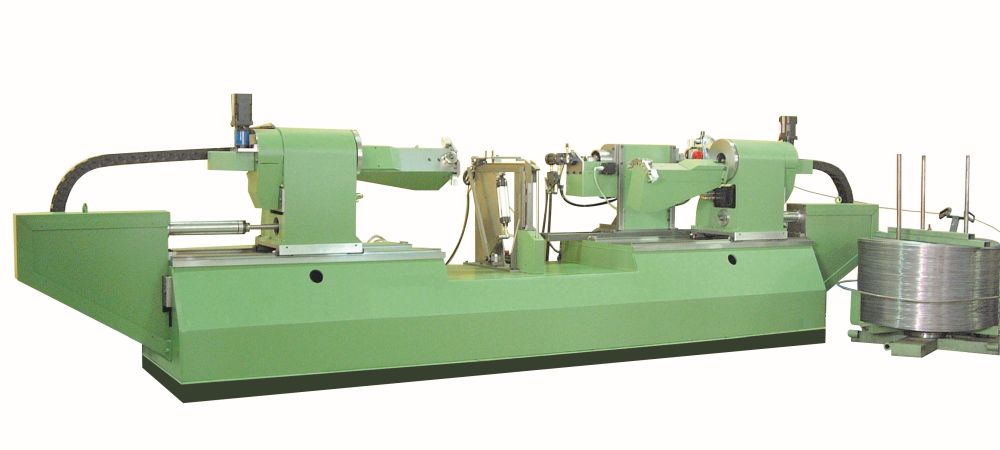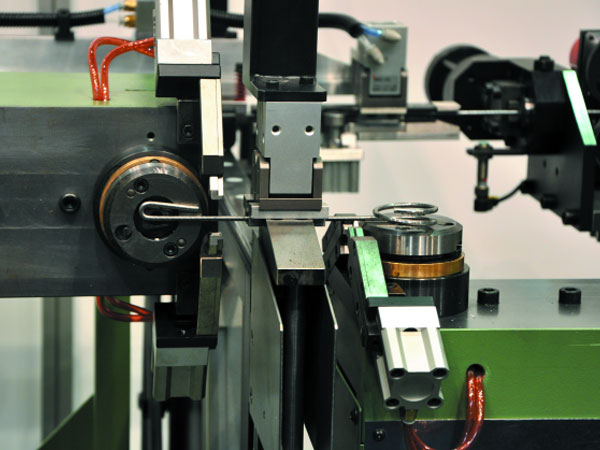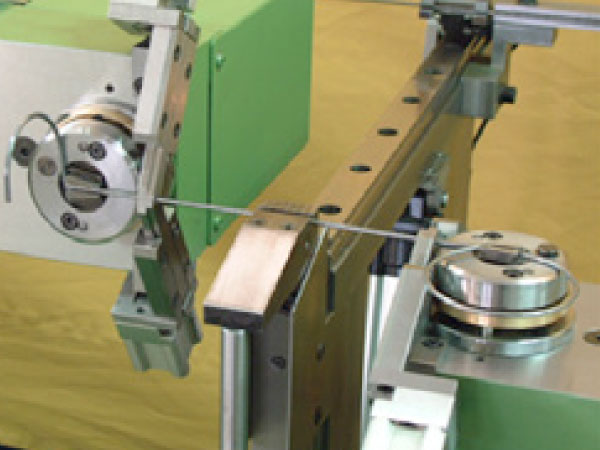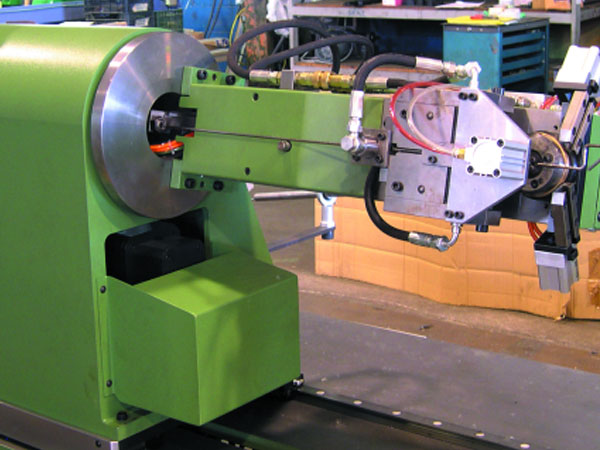BML
Ideal equipment for the medium and large-scale production of parts in 3D, with developed length that can be relatively long and with potentially numerous symmetrical or asymmetrical bends, for which the perfect straightness of the wire is an absolute constraint.
These machines use wire in coils, perform a perfect straightening, using a rotary system, and transfer the straightened-and-cut bars to a bending station. Two independent heads work simultaneously to bend or coil the wire from both ends towards the center, with standard tooling, multi-radius if necessary. The wire remains fixed during bending operations, which can be performed in 3D. Additionally, it is possible to make completely different parts one after the other, without production stop.
A specific system allows to reduce down to 70mm the minimal distance between two bends in the middle of the parts. It is also possible to only use one of the two heads, the machine will then feed the wire into a “step by step” mode. The 70mm minimum lenght is then not anymore a constraint under such an operating mode.
The straightener can be adjusted from the control console, without the need for any tool. For each wire, strength, supplier, settings are saved by the operator in the program, and will be automatically recalled when back to the same raw material.
The programming is intuitive and can be made directly on the machine or using another computer. Doing that, the program can be transferred to the machine, using a USB flash drive or through internet. An integrated simulator allows the operator to visualize the parts, each and every bending, as well as the position of the wire relative to the heads. Such visualization helps to forecast in advance any potential collisions involving the wires or the tooling.

Technical characteristics
| Model | Feeding length (mm) |
Material (mn) | ||
| Rm ≤ 800 daN/mm² | Rm ≤ 1 200 daN/mm² | Rm ≤ 1 600 daN/mm² | ||
| BML-05 | 1000 | 1 -5 | 1 – 4 | 1 – 3 |
| 2000 | ||||
| 3000 | ||||
| BML-08 | 1000 | 1 – 8 | 1 – 7 | 1 – 6 |
| 2000 | ||||
| 3000 | ||||
Videos
Pictures
View of bending head in working process




